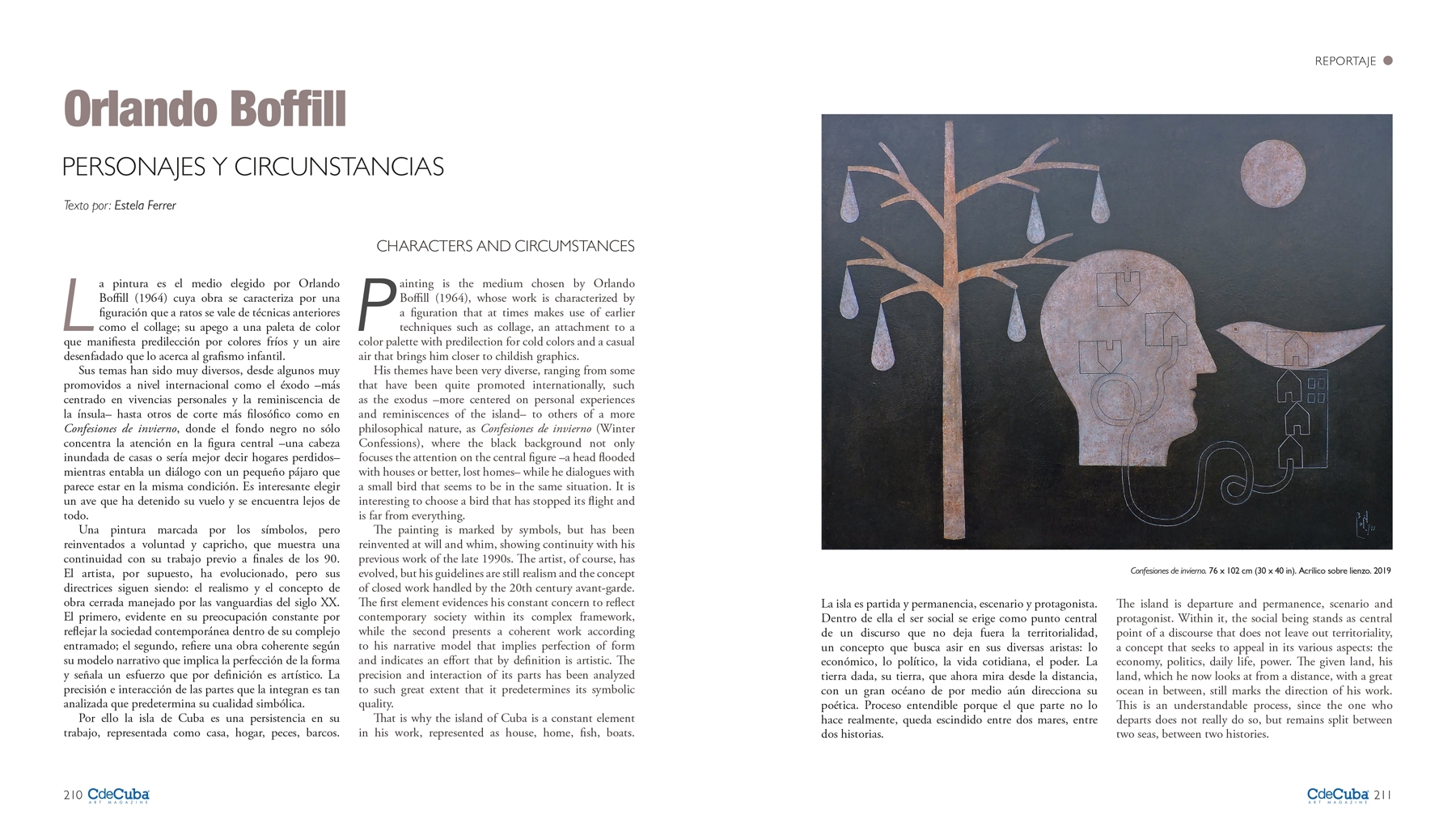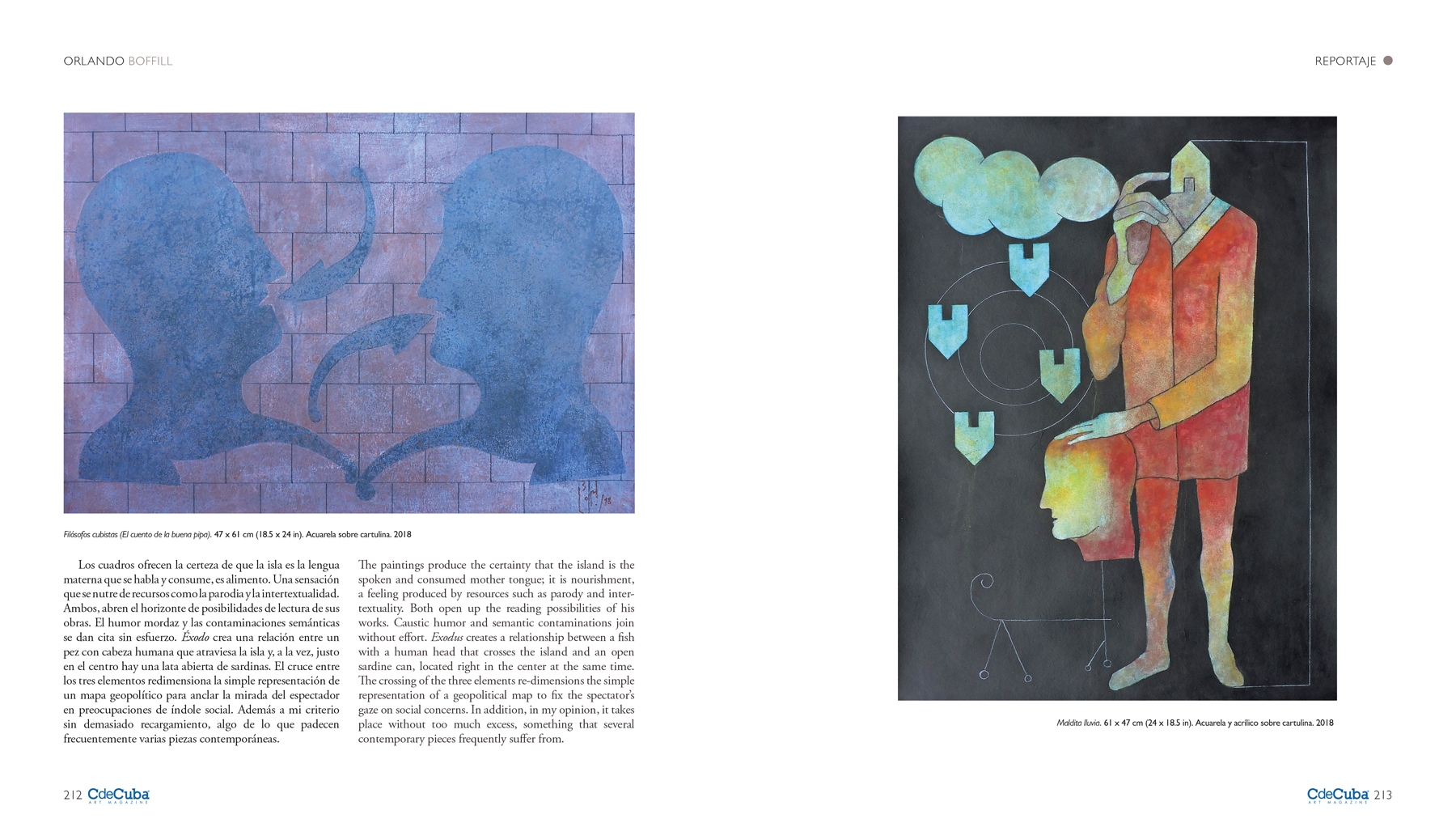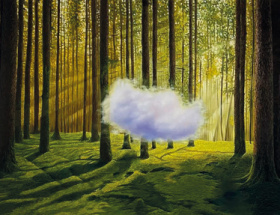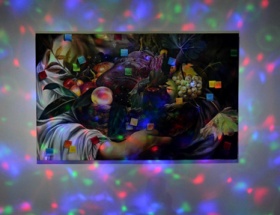Characters and Circumstances
By Estela Ferrer
Painting is the medium chosen by Orlando Boffill (1964), whose work is characterized by a figuration that at times makes use of earlier techniques such as collage, an attachment to a color palette with predilection for cold colors and a casual air that brings him closer to childish graphics.
His themes have been very diverse, ranging from some that have been quite promoted internationally, such as the exodus – more centered on personal experiences and reminiscences of the island – to others of a more philosophical nature, as Confesiones de invierno (Winter Confessions), where the black background not only focuses the attention on the central figure – a head flooded with houses or better, lost homes – while he dialogues with a small bird that seems to be in the same situation. It is interesting to choose a bird that has stopped its flight and is far from everything.
The painting is marked by symbols, but has been reinvented at will and whim, showing continuity with his previous work of the late 1990s. The artist, of course, has evolved, but his guidelines are still realism and the concept of closed work handled by the 20th century avant-garde. The first element evidences his constant concern to reflect contemporary society within its complex framework, while the second presents a coherent work according to his narrative model that implies perfection of form and indicates an effort that by definition is artistic. The precision and interaction of its parts has been analyzed to such great extent that it predetermines its symbolic quality.
That is why the island of Cuba is a constant element in his work, represented as house, home, fish, boats. The island is departure and permanence, scenario and protagonist. Within it, the social being stands as central point of a discourse that does not leave out territoriality, a concept that seeks to appeal in its various aspects: the economy, politics, daily life, power. The given land, his land, which he now looks at from a distance, with a great ocean in between, still marks the direction of his work. This is an understandable process, since the one who departs does not really do so, but remains split between two seas, between two histories.
The paintings produce the certainty that the island is the spoken and consumed mother tongue; it is nourishment, a feeling produced by resources such as parody and inter-textuality. Both open up the reading possibilities of his works. Caustic humor and semantic contaminations join without effort. Exodus creates a relationship between a fish with a human head that crosses the island and an open sardine can, located right in the center at the same time. The crossing of the three elements re-dimensions the simple representation of a geopolitical map to fix the spectator’s gaze on social concerns. In addition, in my opinion, it takes place without too much excess, something that several contemporary pieces frequently suffer from.
Maldita lluvia (Damned Rain) is one of the most ingenious works in terms of the union between the unusual and the rational. The human figure coexists with its own fragmentation and obsessing symbols, such as the house. The house occupies the space of the head, and the head is relegated to a lower plane in the composition. It is a watercolor, a fact that proves his taste for the most traditional painting techniques. There are other interesting solutions, more in relation to the work’s inner rhythm in terms of the circularity of the lines and their dialogue with the clouds. While contributing a playful air, Boffill makes an existential reflection.
It is precisely in that interstice between memory and invention that we find the most seductive area of his work. The realists would say: the capacity to shape the daily scene. However, that would be only half of the recipe; it would be necessary to add that intangible element that for lack of a better name was called muse, and finally, creative impulse.
The artist defines his work as introspective, but also as conceptual, where experimentation with different techniques and materials is allowed. That is why he defines himself as creator of an aesthetic work with a marked relation to the so-called painting-painting.
To all the references to his own country, circumstances and experiences he adds a recent transformation caused by the scope of his work in the art circuit. A body of work that is now shaped by his interaction with a new, faster, eclectic, and cosmopolitan culture with great impact within contemporary art: New York. At this point of his career Boffill expands and liberates his themes, breaking away from localisms and approaching them with a more universal character. A natural cycle in every creation; undoubtedly the necessary evolution.






